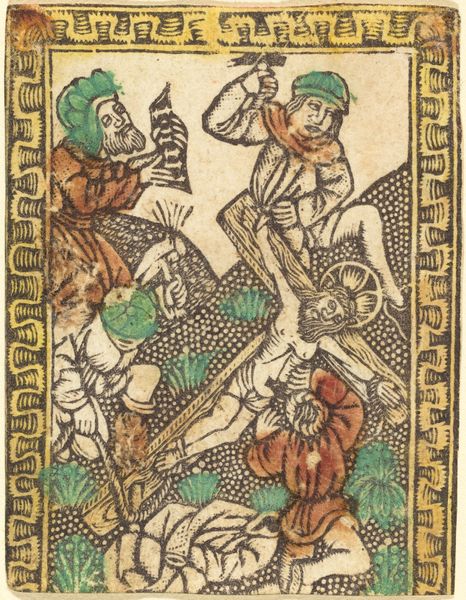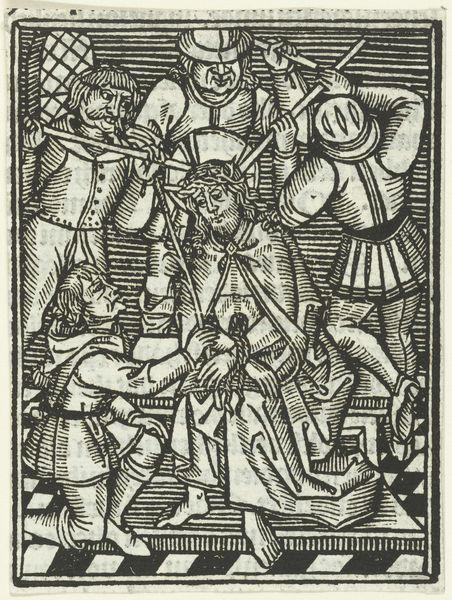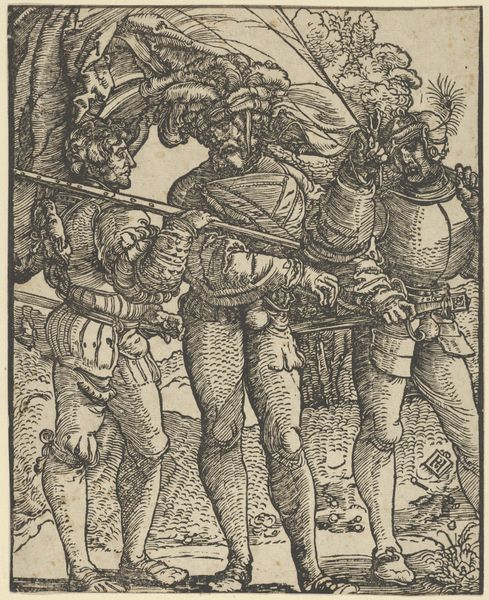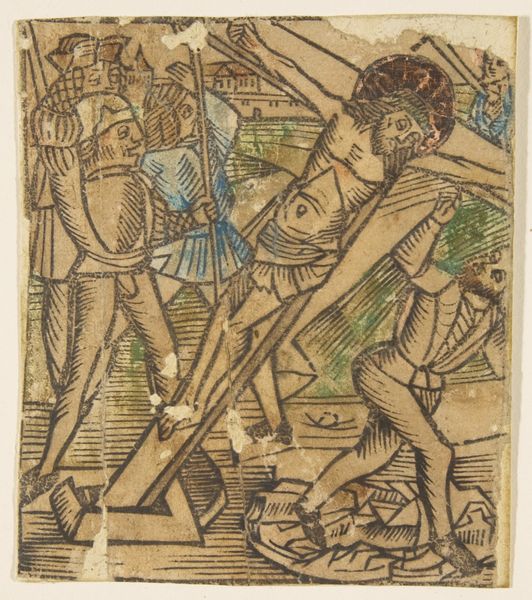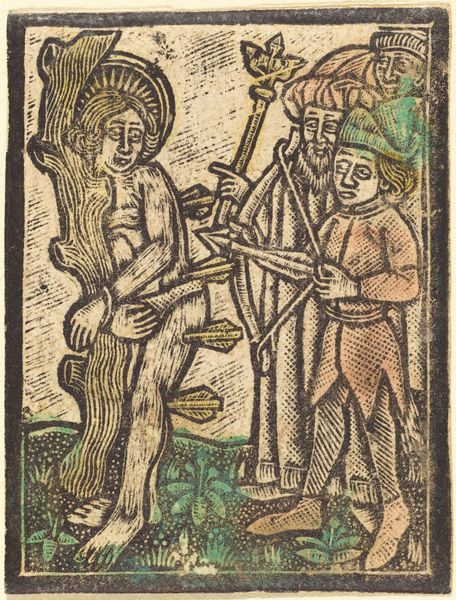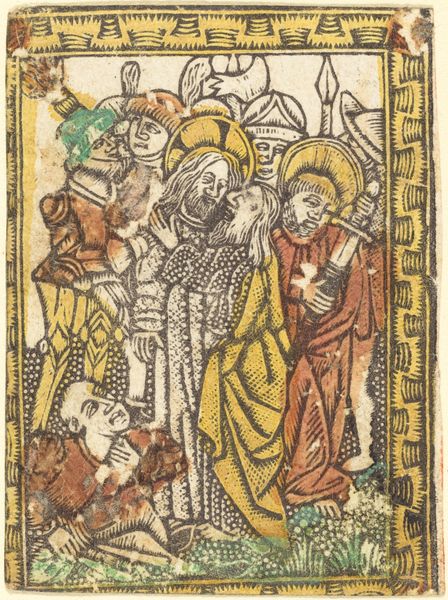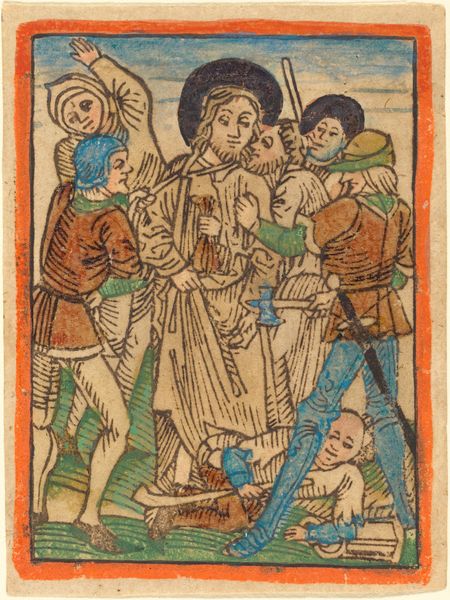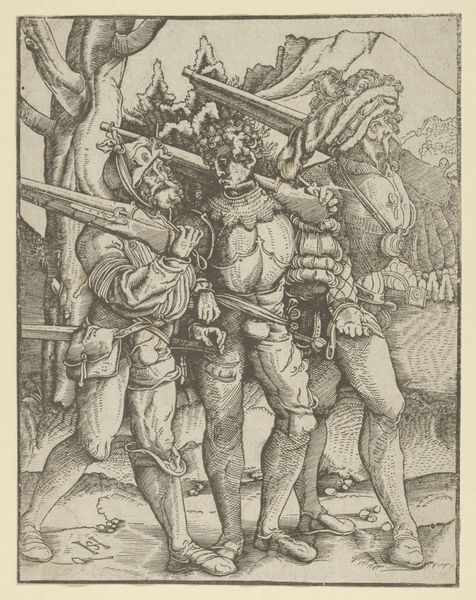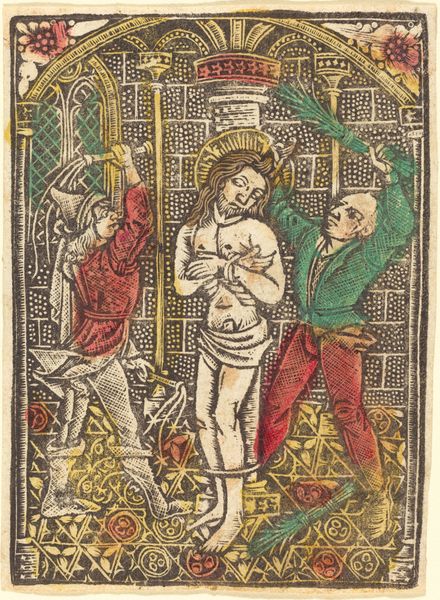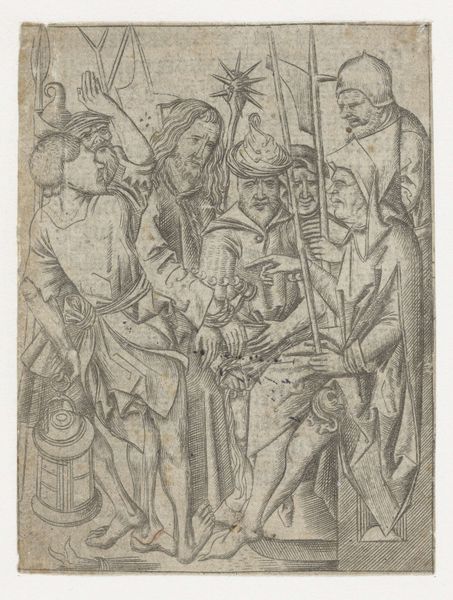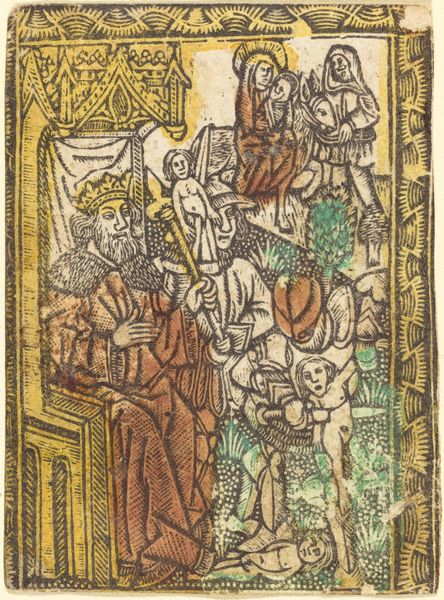
print, woodcut
#
narrative-art
# print
#
figuration
#
woodcut
#
history-painting
#
northern-renaissance
Copyright: National Gallery of Art: CC0 1.0
Editor: Here we have an early print titled "The Flagellation," dating from the late 15th century. It's a woodcut depicting Christ being tortured, and the scene feels stark and brutal given the medium. What stands out to you when you look at this piece? Curator: What I see is a powerful articulation of power dynamics. Think about the historical context: this was created at a time when the Church exerted immense control. How does this image reinforce or perhaps, subtly, challenge that control through its portrayal of violence and suffering? Notice the halo—a clear marker of divinity—juxtaposed with the very earthly brutality inflicted upon Christ. Editor: It's interesting to think about that tension. I was so focused on the violence. Curator: Precisely. Consider, too, the act of making a woodcut itself. It was a relatively accessible and reproducible art form, enabling wider circulation. Who was the intended audience? And what message might they have gleaned? Editor: Maybe that the Church isn’t always moral, but at the time it was not overt or risky? It’s thought provoking. Curator: Yes, that tension is central. By situating this image within the religious and social landscape, we start to unravel its layered meanings. Think of it as an early form of political commentary, veiled in religious narrative, yet subtly questioning authority. This speaks volumes about the role of art in shaping and reflecting societal norms. Editor: I never considered the distribution aspect of the prints. It definitely adds another layer of depth to the interpretation. I see it so differently now!
Comments
No comments
Be the first to comment and join the conversation on the ultimate creative platform.
